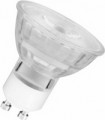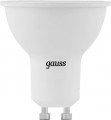Type
Classic incandescent lamps are gradually becoming obsolete these days, with the market mainly featuring
halogen,
fluorescent and LED models.
Traditional LED lamps can be either white or
colored (RGB), and in addition to them, there are models of a rather unusual design -
LED with a battery,
on LED threads and
phytolamps. Here is a more detailed description of the different types:
— Halogen. A slightly improved version of traditional incandescent lamps. "Halogens" also use a hot metal spiral in a sealed bulb; the difference is that the bulb is filled with a special gas containing bromine or iodine vapor. This design increases the service life of the spiral, increases brightness and efficiency, and provides a more uniform color spectrum. Another advantage of such lamps is compatibility with brightness regulators (dimmers). At the same time, they are not distinguished by their efficiency, and therefore gradually give way to more advanced types.
— Metal halide. A type of halogen lamp (see above), the luminous flux in which is formed by adding metal halides to the mercury vapor burner. Sodium or scandium iodide are used here as metal halides (special emitting additives). The burner of metal halide lamps is made of quartz gl
...ass or ceramics, and the outer protective bulb is made of borosilicate glass. Such lamps are often used for outdoor and street lighting, in spotlights, etc. As a rule, they emit natural white light, close to daylight.
— Fluorescent. A type known as "daylight lamps" or "energy-saving bulbs." The bulb of such a lamp is filled with a special gas through which an electric discharge passes; under the influence of this discharge, a special coating applied from the inside of the bulb glows. In terms of efficiency, such lamps are inferior to LEDs, but they are several times more efficient than incandescent lamps (including halogen lamps), last longer and almost do not heat up during operation. Among the disadvantages of fluorescent lamps, in addition to a fairly high price, one can note an uneven glow spectrum and poor compatibility with dimmers - for this, it is necessary to provide additional control circuits. In addition, the filling gas contains mercury vapor, which is why the lamp cannot be thrown into the regular trash, and a broken bulb creates a health hazard.
— LED. LED-based lamps that emit light of one shade — usually classic white, but there are also colored models. LED lamps are characterized by extremely low energy consumption (they are several times more energy efficient than fluorescent lamps and an order of magnitude more efficient than incandescent lamps), high brightness and good color rendering, as well as almost complete absence of heating during operation. In addition, such bulbs are quite resistant to impacts and are much safer from an environmental point of view. And in many models, even a broken bulb does not lead to loss of functionality.
— LED with battery. LED bulbs with a built-in battery, which provides autonomous lighting regardless of the presence of voltage in the power grid. Such bulbs accumulate charge in the battery when there is light, and when the power goes out, they use these reserves, allowing autonomous lighting of the room for a certain time. Also, LED bulbs with a battery can be useful as mobile light sources in nature, in the garage, etc.
— LED (RGB). A type of LED lamp (see above) that uses not traditional white, but colored LEDs — usually three colors corresponding to the RGB color scheme (red, green, blue), hence the name. This allows you to change the color of the lighting in a fairly wide range — from one and a half dozen to several thousand shades. At the same time, such lamps cost accordingly.
— On LED threads. A type of LED lamp that imitates classic incandescent lamps. Such lamps also have a glass bulb, inside which luminous threads are installed on special supports; the difference is that these threads are made of LEDs, and not of a thin metal spiral. Thus, the lamp turns out to be as similar as possible to a classic incandescent bulb, while consuming several times less energy; such models can be useful, in particular, for retro-style lamps, where standard LEDs do not fit well. It is also worth noting that the glow from this type of lamp covers almost the entire sphere - unlike standard LED lamps, which usually have a narrower focus; in some situations, this is an advantage.
— Phytolamps are designed to stimulate the growth and development of plants. The products are used for auxiliary lighting: seedlings, cultivated and ornamental plants, indoor and outdoor vegetation. They are especially relevant during periods of the year when solar activity is at a minimum level. Light-emitting diodes of various shades and intensities act as light sources. White, red, blue, yellow and green LEDs can be collected within one phytolamp. The use of different color shades makes it possible to obtain light waves of different lengths. As a result, vegetation begins to develop comprehensively. Phytolamps are not suitable for the lighting that a person is accustomed to in conditions of insufficient visibility.Q-ty per pack
The number of lamps supplied in the kit. Indicated if it is a
set of several products ; the most modest such kits include only 2 light bulbs, in the most extensive this number can reach 10 pieces.
Anyway, all lamps included in the set are of the same type and characteristics. And such a complete set is convenient, first of all, because the set is cheaper than the same number of lamps bought one at a time.
General-purpose bulb
A parameter that describes the brightness of the lamp compared to a general purpose lamp (LON — a conventional incandescent bulb). Simply put, an analogue of LON is the power of an incandescent lamp, which is equal in brightness to the model in question. For example, a
75W LON analogue means that the lamp glows as brightly as a 75W incandescent lamp.
This parameter appeared for the convenience of evaluating and comparing different types of lamps in terms of brightness. Data on the luminous flux say little to the average user, and it makes no sense at all to evaluate the brightness by power — different types and even different models of lamps of the same type can differ markedly in efficiency. On the other hand, many users are accustomed to dealing with incandescent lamps, and comparison with such a lamp is familiar and understandable to them. In addition, the LON analogue allows you to compare different types of lamps, and it can also be very convenient when replacing incandescent lamps with more economical ones: for example, if 100-watt lamps were used in the chandelier, then the new lamps must have an LON analogue of
at least 100 W — otherwise they may be too dim.
Luminous flux (brightness)
The conditional "amount of light" produced by a light bulb in normal mode. The higher the luminous flux, the brighter the light and the more clearly the illuminated scene will be visible. Note that lumen values are used primarily for special purposes; in everyday life, the estimation of brightness by the analogue of LON is more popular (see above), and here the ratio is as follows:
— 40 W analogue LON corresponds to a brightness of 370 lm;
— 60 W — 550 lm;
— 75 W — 800 lm;
— 100 W — 1200 lm;
— 150 W — 1900 lm;
— 200 W — 2700 lm.
Note that the principle "the more the better" in the case of the brightness of light bulbs is not always applicable. And the point here is not only energy consumption: too bright light is harmful to the eyes, leads to rapid fatigue and psychological discomfort.
Scattering angle
The angle of light dispersion is the space in front of the light bulb, which is illuminated by the source itself, and not by the light reflected from the walls and interior items. In other words, the angle of light scattering determines the zone of the best illumination. Classic incandescent bulbs demonstrate the widest dispersion angle — they shine almost 360˚. LED spotlights have the smallest illumination angle, which are able to illuminate well only the area directly under the bulb — the scattering angle in such cases is about 15˚. Of course, a large angle of light scattering is not always needed. Working in the evening at the table, you need light only in front of you, so as not to disturb anyone. For spotlights that light up only small objects in front of them (a painting, sculpture, bas-relief, etc.), the scattering angle can even be from 4 °. As for the top (general) lighting, in this case it is better to choose something with a wider dispersion angle. These bulbs provide extremely uniform illumination.

